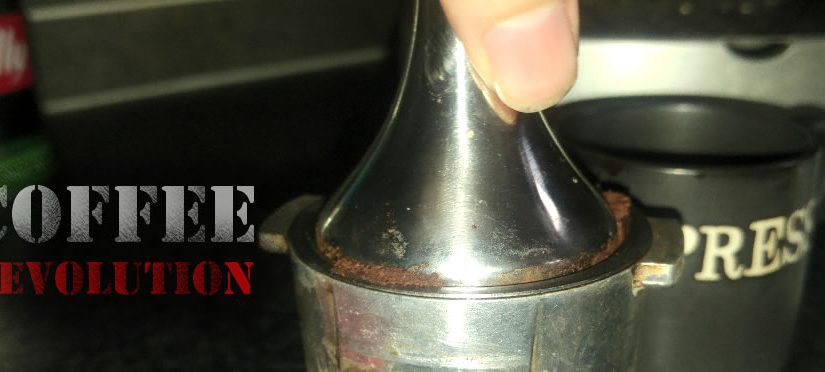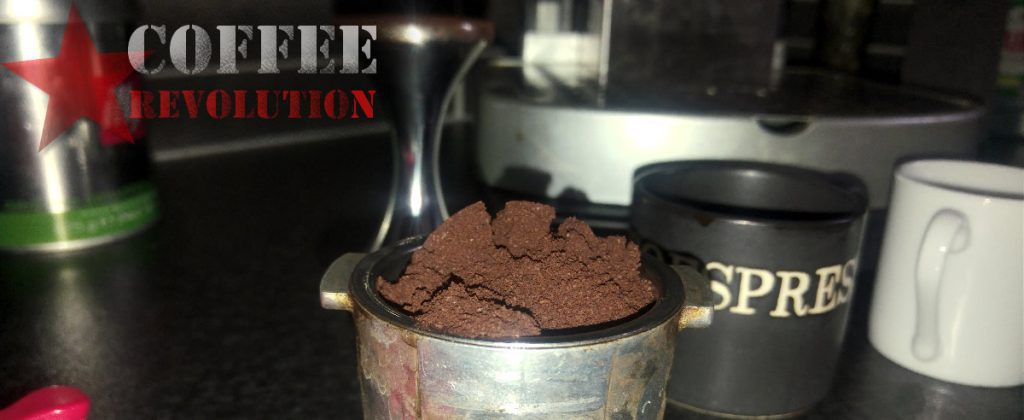Being able to pull perfect espresso shots is a skill every barista needs, but in order to pull such shots, one must perfect the art of tamping ground coffee in the portafilter.
Note that this article is mainly for those not using super-automatic espresso machines that do the grinding, tamping, and pulling, all in one button push.
What is Tamping?
It is quite simply the process of pressing the coffee grinds into the portafilter.
Most will come with some device either plastic or metal for achieving this.
First Steps: Before We Talk About Tamping
Before we start running, we must first learn to walk. Start out by choosing a quality espresso blend, but not one that you’d show off to guests. This is because there is a lot of trial and error in figuring out how to tamp, and it can result in a lot of wasted coffee.
So it’s best to choose something not too pricey, but still drinkable enough to where you can know you’re doing everything correctly.
Check Your Tamper Size
Next, make sure that your portafilter and tamper are compatible. Meaning the inner diameter of the portafilter basket is no more than .2 mm from the outer diameter of the tamper when it is inserted.
Most espresso machines from reputable manufactures will come with a tamper, but it will usually just be a low quality plastic one that is difficult to use. If it’s states in the manual, simply use the measurements for the circular portion of the tamper to purchase one you might like a lot more.
I personally prefer and use a heavy metal one, it has two sizes at each end so perfectly fits my one and double shot portafilters (not that I ever use the single shot one!)
Grind Tips For Best Tamping
For now, we’ll leave grind size alone, but do keep in mind that it needs to be adjusted as you go. For a Doppio espresso, 2 shots, somewhere between 14 to 18 grams of coffee is generally used.
Step 1
Simply grind that much on a fine setting, like a loose powder, and then dump it into a clean portafilter.
Step 2
After that, shake the portafilter side to side a couple times to level the bed of grounds, and then insert the tamper.
Step 3
Twisting slightly, and at a moderate pace, apply firm and even pressure to the portafilter while it rests on a sturdy counter. The goal is to hit 30 pounds of down pressure in order to form a sort of puck.
To get into the hang of it, some people start off by placing the portafilter on a scale, and tamping on that to know when they hit 30 pounds, and then somewhat memorize how much force it takes to do so, slowly weening off of it.
There are also tampers available that have a spring mechanism that will let you know once the set pressure has been reached; another good learning tool.
Step 4
After tamping, dust off any grounds on the portafilter’s rib, and inspect your work. The puck should be flat all around, crack free, smooth, and quite level. If it looks a bit wrong, simply tapping the portafilter against a hard object, carefully, will unsettle the grounds and allow you to give it another go.
It can take a lot of practice to get a good looking espresso puck but don’t get disheartened; it’s a learning process many must undergo.
Problems?!?
Some coffee makers will not flow if the grind is too fine and there is not enough pressure. This is particularly true of fresh beans which tend to clump together better.
Get to know your machine and grind and adjust the pressure accordingly.



